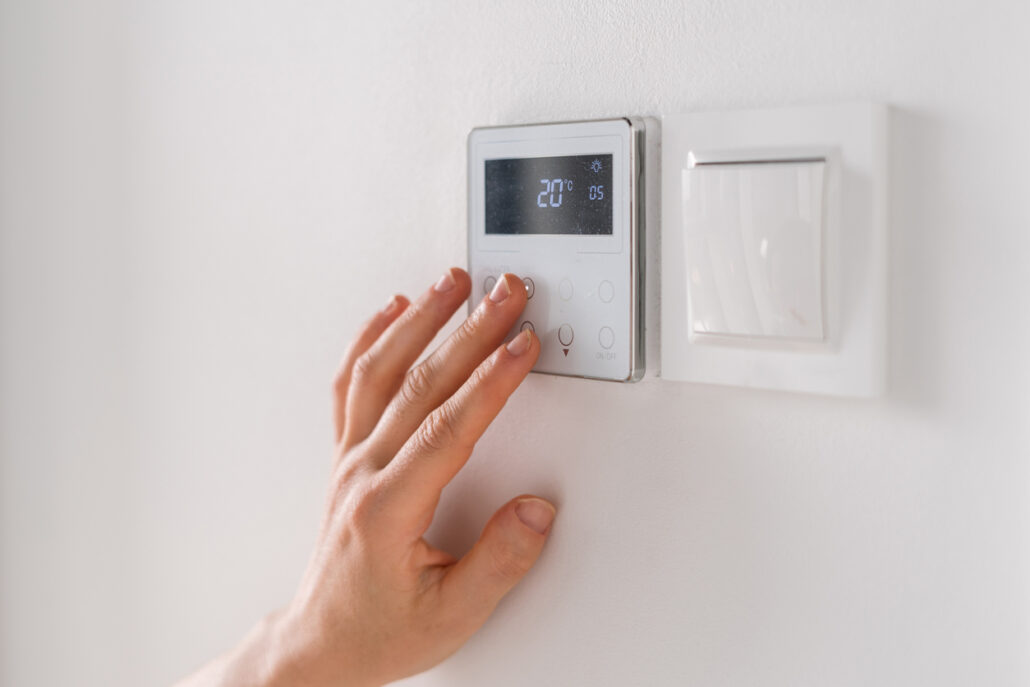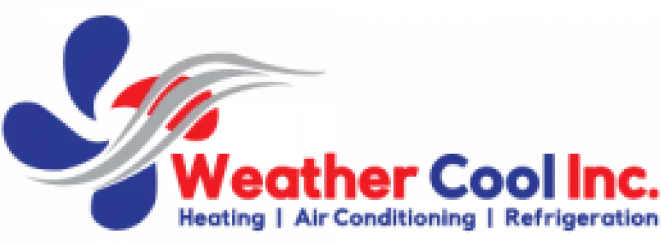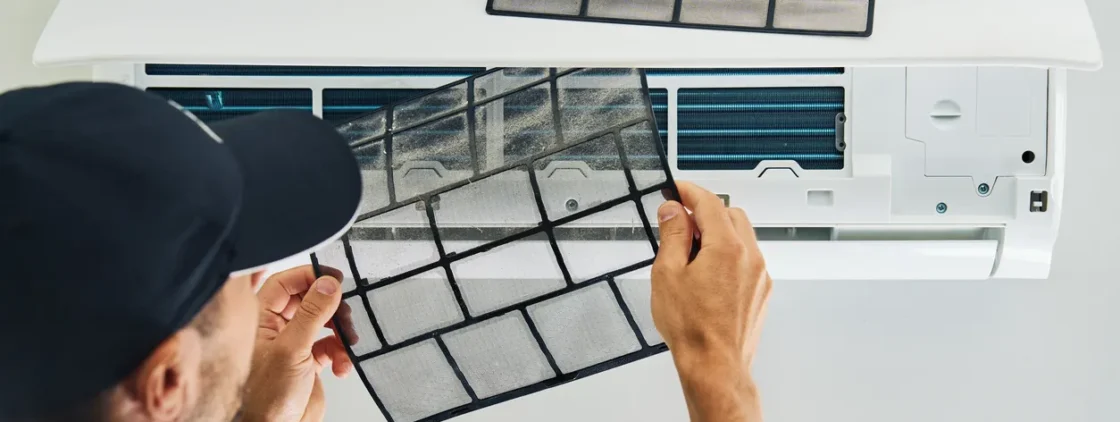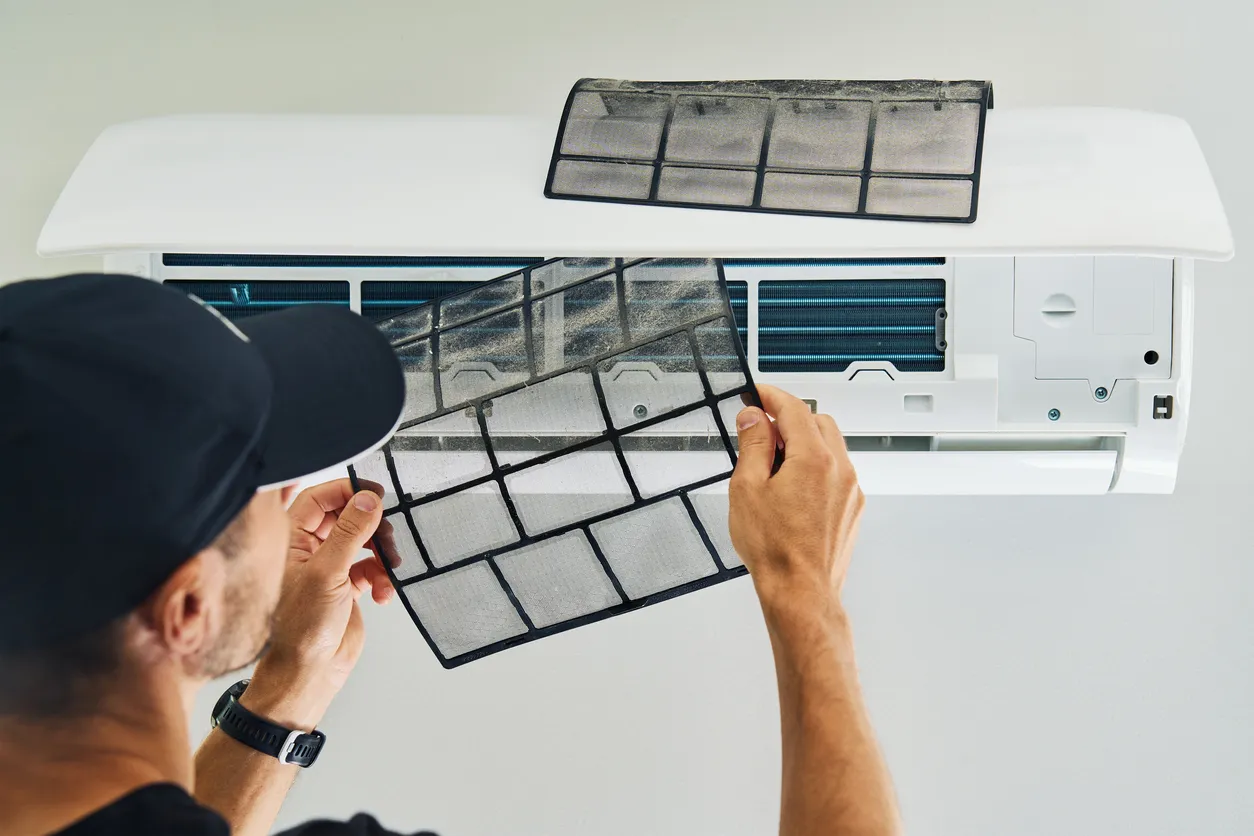DIY HVAC Maintenance: Your Complete Guide to Filters, Coils, Thermostats, and More
Proactive DIY HVAC maintenance not only boosts your indoor air quality and energy efficiency but also extends your equipment’s lifespan and cuts down on emergency repair calls. For homeowners and commercial property managers in Houston, dealing with high humidity and airborne particles presents unique challenges. That’s why understanding filter replacement schedules, coil cleaning methods, thermostat troubleshooting, duct maintenance, seasonal preparations, and safety precautions is crucial. This guide offers expert tips on each topic—from filter types and MERV ratings, coil cleaning tools and steps, thermostat programming, duct and vent cleaning, seasonal checklists, common fixes, and essential safety measures—while also highlighting when Weather Cool Inc.’s professional HVAC maintenance and repair services can provide seamless support for those more complex or heavy-duty jobs.
How Often Should You Swap Out Your HVAC Filters for Peak Air Quality?
Most homeowners should plan to replace standard HVAC filters every 1–3 months to keep airflow at its best and effectively trap dust, pollen, and humidity-borne particles. Regular replacements prevent system strain, support healthy indoor air, and can slash energy consumption by up to 15 percent. Given Houston’s humid climate, filters tend to clog faster, making a strict schedule essential for both comfort and your system’s longevity.
Your annual filter replacement schedule might shift based on the filter type, how often your home is occupied, and local air quality. Installing filters with higher ratings can boost allergen removal but may necessitate more frequent changes. Clients who opt for Weather Cool Inc.’s preventative maintenance plans often benefit from quarterly inspections that include filter assessments and timely replacement recommendations.
What Are the Different Types of HVAC Filters and Their Advantages?
Pleated filters utilize a larger surface area to capture fine particles, leading to improved indoor air quality. Fiberglass filters are a budget-friendly option for trapping debris but require more frequent changes. Washable filters help reduce landfill waste and long-term costs but demand diligent cleaning.
How to Select the Right MERV Rating for Your Houston Home or Business?
Choosing a MERV 8–13 filter strikes a good balance between particle removal and adequate airflow for Houston’s climate. Higher MERV ratings capture smaller allergens but can restrict airflow if your system isn’t designed for them. Reviewing product specifications and your system’s airflow capacity will help you match filter efficiency to your equipment’s needs.
Research suggests that while HEPA filters offer superior particle capture, high-efficiency MERV filters can also provide significant aerosol filtration, especially when incorporated into DIY air purifier setups.
DIY Air Purifier Comparison: HEPA versus MERV Filters for Aerosol Filtration
Primary metrics include the clean air delivery rate (CADR), noise generated (dBA), and cost-effectiveness ($$). CADR measurement often necessitates laboratory experiments with generated aerosols that are difficult to replicate. We employ simplified, low-cost measurement tools for ambient aerosols, enabling scalable evaluation of aerosol filtration efficiencies (0.3 to 10 microns), estimated CADR, and noise generation to compare three HEPA purifiers.
Price-performance comparison of hepa air purifiers and lower-cost merv 13/14 filters with box fans for filtering out sars-cov-2 and other particulate aerosols in indoor …, 2021
What’s the Step-by-Step Process for Safely Replacing HVAC Filters?
- Shut off power at the breaker to prevent the fan from running.
- Locate the filter cabinet and carefully remove the access panel.
- Slide out the old filter, noting its size and the direction of airflow.
- Insert the new filter, aligning it with the airflow arrows and ensuring a snug fit.
- Restore power and jot down the replacement date for your future reference.
Following these steps helps maintain system efficiency and prevents potential injury or damage. Always wear gloves and a dust mask to minimize exposure.
When Should You Reach Out to a Professional for HVAC Filter Replacement?
If your filters show visible mold, damage, or become persistently clogged within weeks, a professional inspection is warranted. Commercial systems with complex multi-filter arrays often require trained technicians to ensure correct sizing and pressure settings. Weather Cool Inc.’s expert HVAC filter replacement service guarantees optimal airflow, compliance with manufacturer warranties, and long-term system health.
How Can You Clean Your AC Coils Yourself to Boost Cooling Efficiency?

Direct contact with clean coils can boost cooling efficiency by up to 40 percent, leading to reduced energy use and preventing freeze-ups. AC coils include both the outdoor condenser coil and the indoor evaporator coil; dirt, pollen, and debris accumulate rapidly in Houston’s humid air. A regular cleaning schedule protects your compressor’s health and sustains peak performance.
Start by shutting off power at the outdoor disconnect. Wear protective goggles and gloves. Gather a soft nylon brush, an adjustable nozzle hose attachment, and an appropriate coil-safe cleaning solution or mild degreaser. Allow the coils to dry completely before restoring power to avoid electrical hazards.
| Coil Location | Cleaning Method | Recommended Frequency |
|---|---|---|
| Outdoor condenser | Rinse with a low-pressure hose and coil cleaner spray | Every 6 months |
| Indoor evaporator | Gently brush fins and apply foaming coil cleaner | Annually |
Cleaning both types of coils prevents airflow restriction and maintains even refrigerant pressures, resulting in consistent cooling and lower energy costs.
What Tools and Supplies Are Needed for AC Coil Cleaning?
Essential tools include a soft-bristled fin comb or brush, a garden hose with an adjustable nozzle, coil-safe cleaner, protective gloves, and eye protection. A shop vacuum with a soft brush attachment can help with indoor coil debris removal.
What Are the Step-by-Step Instructions for Cleaning Outdoor and Indoor AC Coils?
- Switch off power at the breaker box and the outdoor disconnect.
- Remove any debris and loose leaves from the unit’s exterior.
- Spray the coils with a manufacturer-approved cleaner, allowing the foam to penetrate.
- Rinse gently from top to bottom, avoiding high-pressure streams that can damage the fins.
- Straighten any bent fin tabs with a fin comb to improve airflow.
This procedure restores heat transfer efficiency and can extend the time between professional service calls when performed correctly.
How Does Houston’s Humid Climate Impact Coil Maintenance?
High humidity accelerates dirt adhesion and encourages mildew growth on coil surfaces. Frequent cleaning reduces microbial buildup and corrosion, preventing evaporator freeze-ups and condensate drain blockages. Regular inspections during the humid months help keep your systems running smoothly.
When Is Professional AC Coil Cleaning the Best Option?
Complex coil assemblies, significant corrosion, or refrigerant leaks necessitate professional HVAC maintenance. Weather Cool Inc.’s certified technicians provide deep-cleaning services, utilizing industrial-grade equipment to eliminate contamination and verify refrigerant levels, ensuring dependable cooling in Houston’s demanding climate.
What Are the Best DIY Thermostat Troubleshooting and Programming Tips?

Programmable and smart thermostats can enhance energy management by up to 10 percent through precise temperature scheduling and adaptive learning capabilities. Calibrating and maintaining battery-powered or hardwired controls ensures accurate readings and reduces unnecessary HVAC cycling.
Start by replacing batteries every 6–12 months and gently wiping sensor contacts clean. Confirm your thermostat is placed away from direct heat sources or drafts to ensure reliable ambient temperature readings. Programming vacation, day, and night schedules helps optimize comfort while minimizing energy waste.
| Thermostat Type | Energy-Saving Feature | Maintenance Task |
|---|---|---|
| Programmable | Weekday/weekend schedules | Battery replacement |
| Smart (Wi-Fi) | Learning adaptive control | Firmware updates |
| Manual dial | Simple up/down control | Calibration check |
Proper thermostat upkeep prevents short cycling, uneven temperature zones, and excessive energy bills—laying a solid foundation for system efficiency.
How Do Programmable and Smart Thermostats Contribute to Energy Savings?
Programmable thermostats maintain consistent temperature setbacks during overnight hours or when you’re away, reducing HVAC runtime. Smart models further optimize comfort by learning your occupancy patterns, automatically adjusting setpoints, and offering remote control capabilities.
How to Replace Thermostat Batteries and Calibrate Settings?
After carefully removing the cover, swap in fresh alkaline batteries, ensuring they are inserted with the correct polarity. Use the built-in calibration menus or compare the thermostat’s reading with a handheld thermometer placed at floor level. Adjust offset settings to align the displayed temperature within ±1 °C accuracy.
What Are Common Thermostat Issues and How Can You Resolve Them?
- Inconsistent temperature display: Clean the sensor contacts and reset the calibration.
- Unresponsive controls: Reboot the device by cutting power for one minute.
- Erratic cycling: Verify correct fan settings and check wiring terminals for any signs of corrosion.
Addressing these issues helps maintain reliable HVAC operation and prevents undue strain on your system’s components.
When Should You Contact Weather Cool Inc. for Thermostat Repairs?
If firmware updates fail, wiring appears damaged, or temperature swings persist despite calibration efforts, professional service is necessary. Weather Cool Inc.’s expertise in thermostat repair and installation ensures secure wiring, proper system integration, and warranty-compliant upgrades.
What Are the Essential DIY Steps for Cleaning and Maintaining HVAC Ductwork and Vents?
Clean ducts and vents improve indoor air quality by reducing allergen circulation and promoting better airflow balance. Identifying and removing accumulated dust, pet hair, and construction debris prevents strain on the blower motor and enhances comfort levels throughout your home.
Inspect vent registers and grille covers for visible dust layers. Remove the covers and vacuum the interiors with a brush attachment. Follow up by wiping surfaces with a damp microfiber cloth and a mild detergent. Reinstall the covers and adjust vent louvers to maintain balanced airflow.
How Can You Spot Signs of Dirty or Clogged Ducts?
Common indicators include uneven room temperatures, reduced airflow, musty odors, and increased dust accumulation on surfaces. Higher energy bills without a corresponding change in usage also signal duct restrictions that require cleaning.
What Is the Safe and Effective Method for DIY Air Duct Cleaning?
- Turn off HVAC power at the breaker.
- Remove vent covers and thoroughly vacuum the duct openings.
- Wipe accessible sections with antibacterial cleaning wipes.
- Replace vent covers and restore power.
This approach can improve airflow and air quality when performed regularly, though a full-system cleaning might be beyond the scope of DIY. For a more comprehensive understanding of air filtration, consider exploring the effectiveness of different filter types in various scenarios.
DIY Air Purifier Comparison: HEPA versus MERV Filters for Aerosol Filtration
Primary metrics include the clean air delivery rate (CADR), noise generated (dBA), and cost-effectiveness ($$). CADR measurement often necessitates laboratory experiments with generated aerosols that are difficult to replicate. We employ simplified, low-cost measurement tools for ambient aerosols, enabling scalable evaluation of aerosol filtration efficiencies (0.3 to 10 microns), estimated CADR, and noise generation to compare three HEPA purifiers.
Price-performance comparison of hepa air purifiers and lower-cost merv 13/14 filters with box fans for filtering out sars-cov-2 and other particulate aerosols in indoor …, 2021
When Is Professional Duct Cleaning Necessary for Houston Properties?
Extensive mold growth, rodent infestations, or severe debris accumulation demand professional intervention. Weather Cool Inc.’s duct-cleaning service utilizes positive and negative air pressure devices to thoroughly dislodge contaminants, preserving system performance and occupant health.
How Can You Prepare Your HVAC System for Houston’s Seasonal Changes?
Tailoring your maintenance to seasonal demands ensures reliable cooling in the summer and efficient heating in the winter. A structured seasonal checklist helps reduce the risk of breakdowns and sustains comfort throughout the year.
What Are the Key Spring AC Maintenance Tasks?
In the spring, inspect outdoor units for debris, clean coil fins, lubricate fan motors, and verify condensate drain passages are clear. Checking refrigerant pressures before the peak cooling season begins can prevent mid-summer failures and excessive energy costs.
How to Perform Autumn Furnace Checks for Efficient Heating?
Before the heating season starts, examine the heat exchanger for cracks, replace filters, test ignition systems, and calibrate thermostats for setback schedules. A lean fuel-air mixture and clean burner assemblies improve combustion efficiency and safety.
What Are Effective Winterization Tips for Your HVAC System?
Seal any gaps around ductwork, insulate exposed lines, and implement a programmable setback schedule to minimize fuel consumption. Cover outdoor units to protect them from ice and snow damage, and keep condensate lines clear to prevent blockages.
What Common HVAC Problems Can You Fix Yourself Before Calling a Technician?
Weak airflow often stems from clogged filters, closed dampers, or obstructed outdoor intakes. Simple fixes can restore comfort without requiring a service call, while addressing minor noises and leaks can prevent them from escalating.
Begin troubleshooting by checking your filters and vent positions. Clear any leaves or debris from outdoor units. Tighten loose panels and screws to eliminate rattles. These steps frequently resolve basic performance dips and noises.
How to Resolve Weak Airflow Issues in Your HVAC System?
Restore proper airflow by replacing dirty filters, fully opening zone dampers, and clearing obstructions around vents. Inspect the blower housing for dust buildup and remove any loose insulation that might be blocking airflow.
What Are Simple Solutions for Minor Leaks and Noises?
Apply duct-seal mastic to small duct leaks and tighten sheet-metal screws on panels. Lubricate fan bearings with a few drops of electric-motor oil. These minor repairs can reduce energy loss and eliminate squeaks or rattles.
When Is It Time to Seek Professional HVAC Repair Services?
Major refrigerant leaks, compressor failures, or electrical malfunctions require intervention from a licensed technician. Contact Weather Cool Inc. if you encounter pressure irregularities, tripped breakers, or persistent system alarms to ensure safe, lasting resolutions.
What Safety Precautions Should You Take When Performing DIY HVAC Maintenance?
DIY HVAC tasks involve potential electrical, mechanical, and refrigerant hazards. Prioritizing safety through proper procedures and protective gear minimizes the risk of injury and protects your system components from accidental damage.
Always shut off power at the breaker before servicing any component. Use a non-contact voltage tester to confirm de-energization. Maintain a clear workspace and strictly follow manufacturer safety guidelines.
How to Ensure Electrical Safety During HVAC Tasks?
Disconnect power and wait five minutes for capacitors to discharge. Wear insulated gloves and safety goggles when accessing control boards. Label any disconnected wires to prevent miswiring during reassembly.
What Should You Know About Refrigerant Handling and Hazards?
Refrigerants can cause frostbite, oxygen displacement, and environmental harm. Never puncture refrigerant lines and avoid using open-flame torches near piping. Professional refrigerant recovery is essential for system repairs or replacements.
What Personal Protective Equipment (PPE) Is Recommended for DIY HVAC?
Wear safety goggles, nitrile gloves, and a dust mask when handling filters, coils, or cleaning chemicals. Use steel-toe footwear and long-sleeved clothing to protect yourself from sharp edges and falling debris.
By adhering to these safety measures, DIY HVAC maintenance becomes an efficient and low-risk endeavor that enhances system reliability and your indoor comfort.
Maintaining your HVAC system through structured DIY tasks—from filter changes and coil cleaning to thermostat calibration, duct maintenance, seasonal checks, and safety protocols—delivers improved air quality, energy savings, and extended equipment life. When tasks go beyond DIY capabilities or require specialized tools, Weather Cool Inc.’s professional HVAC maintenance, repair, and installation services offer dependable expertise for Houston homes and businesses. Reach out to Weather Cool Inc. today to schedule comprehensive service and ensure year-round performance and comfort.




